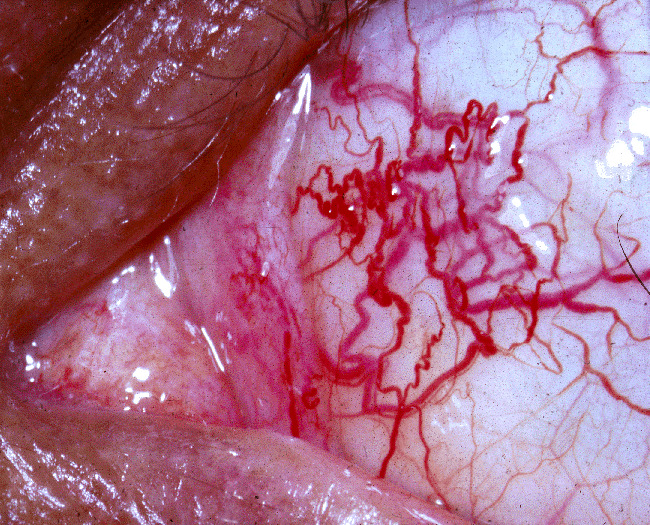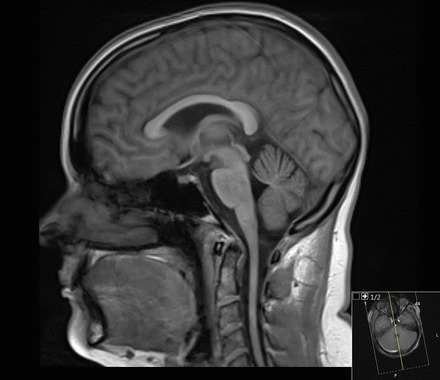Playlist
Show Playlist
Hide Playlist
Ataxia in Children
-
Slides Ataxia Pediatrics.pdf
-
Download Lecture Overview
00:01 In this lecture we will discuss Ataxia in Children. 00:05 Ataxia is the decreased coordination of voluntary movements not just walking. 00:09 But really, any movement in children. 00:11 Causes are varied and dependent a lot on how old the child is and the associated symptoms. 00:18 One common cause of Ataxia in children is injury to the brain. 00:22 And in children in particular, common injuries include birth asphyxiation, which can lead to cerebral palsy stroke, trauma, and hypoxic injury. 00:33 So, all of these are a varieties of injuries that can affect the brain and result in Ataxia in children. 00:39 One of the conditions that can cause Ataxia in children is Ataxia Telangiectasia. 00:45 Ataxia Telangiectasia is an autosomal recessive disease. 00:51 The gene is carried in 1.5 percent of U.S. caucasians and is on 11q22.3 It is a defect in the gene responsible for DNA repair. 01:04 It affects both central and peripheral nervous systems. 01:08 Basically, childen with Ataxia Telangiectasia are generally born normal and continue to develop normally until they are about the age when the child walks. 01:18 the child then has a progressive worsening of ambulation and running. 01:24 The child often have gross and fine motor skills that deteriorate over time and also child will eventually develop difficullty with eye movements and dysarthria The eye movement difficult has to do with coordinating the movement of the head and the eyes. 01:40 So, often when they turn their head, they then have trouble keeping track of objects and their environment. 01:48 These children will also unfortunately have a decline in cognition. 01:52 And when we examine them we could see Telangiectasia's on their skin face and neck About 70% of these children will have an associated immune deficiency and as a result, they often have progressive pulmonary disease. 02:08 And that is a major cause of morbidity and mortality in this condition. 02:13 So, here are some Telangiectasias in a child. You can see them right in the eye. 02:17 They are these squiggly red lines where the capillary beds have developed. 02:24 Another condition in children is Friedreich's Ataxia. 02:28 Friedreich's Ataxia is autosomal recessive and it is a trinucleotide repeat disorder. 02:34 And that each generation have subsequently more and more repeats and more and more severe alteration of that gene. 02:41 It usually presents in adolescence, And it is a progressive Ataxia on all four limbs. 02:48 These patients will have motor weakness and eventually Cerebellar dysarthria, dysphagia and they will suffer hearing and vision loss. 02:58 Patients often go Kyphoscoliosis and may have hand and foot atrophy. 03:04 Usually, cognition in this case is preserved. 03:09 Other degenerative problems that can cause Ataxia in children include genetic causes such as Wilson's disease, which causes on an acrual of copper and particularly affect the basal ganglia. 03:21 Also, children can also get Spinocerebellarataxias. 03:25 Metabolic disease can cause Ataxia, specifically mitochondrial disorders tend to affect the nerves most and so those children may have consequences. 03:35 Lastly, obviously, brain malformations can cause Ataxia. 03:39 Example of those include Chiari malformations. 03:43 Dandy-Walker cyst, and Cerebellar dysgenesis. 03:48 Let's shift to look at what could cause Acute Ataxia in a child. 03:53 A child is walking along fine looks great and then suddenly, has severe Ataxia. 04:00 There are many different causes that can cause this but most commonly, it is a drug ingestion. 04:07 Children especially young toddlers are always getting into things and may consume either and illicit or a prescribed drug in the home. 04:15 Examples of prescribed drugs that children can get into include Benadryl Dextromethorphan and that one is particularly common. 04:25 Cough syrup ingestion often causes Ataxia and the abnormal movement of the eyes. 04:30 One drug of abuse that doesn't show up on a screen that is around is Ketamine. 04:37 and Ketamine causes a profound Ataxia. 04:39 Also, toxins can cause Ataxia. 04:42 And usually the one that I would implicate is Lead poisoning. 04:46 We see a lot of lead poisoning in the United States. 04:49 Also, patients can have infectious Ataxia. 04:53 Diseases such as Cerebellitis. It is a viral condition that attacks the cerebellum and those children will present with Ataxia. 05:02 A severe Otitis media can present with Ataxia as well. 05:06 Those usually are very severe and that is a very unusual presentation of Otitis media. 05:12 Also, inside the ear, the labrynth itself can also be infected we call this Labrynthitis. 05:18 And in those cases children can be Ataxic. 05:21 In all of these cases, what we do is we simply wait for the child to get better. 05:28 Very rarely, children can get viral encephalitis that can result in Ataxia but also presents with other symptoms such as inability to speak correctly. 05:38 Or altered mental status. 05:40 Varicella and several other viruses are implicated in these causes of Ataxia. 05:45 So that is my brief summary of causes of Ataxia in children. 05:49 Thanks very much.
About the Lecture
The lecture Ataxia in Children by Brian Alverson, MD is from the course Pediatric Neurology. It contains the following chapters:
- Introduction to Ataxia
- Ataxia Telangiectasia
- Friedreich's Ataxia
- Acute Ataxia
Included Quiz Questions
Which of the following is TRUE about ataxia telangiectasia?
- Gross and fine motor skills deteriorate.
- It's an autosomal dominant condition.
- The ability to walk/run stagnates but doesn't deteriorate.
- Children start showing abnormalities as soon as they are born.
- Patients' speech is not affected.
Customer reviews
5,0 of 5 stars
| 5 Stars |
|
3 |
| 4 Stars |
|
0 |
| 3 Stars |
|
0 |
| 2 Stars |
|
0 |
| 1 Star |
|
0 |
Thanks a lot for this lecture. I found it very useful.
Excellent lecture. I like the distinction between acute and chronic. It avoids the "list syndrome". Thanks!
Very interesting, simple explanation also of more complex topics, clinically relevant. I really enjoyed watching the lectures during my preparation for USMLE Step 2 CK and learned a lot!





